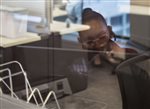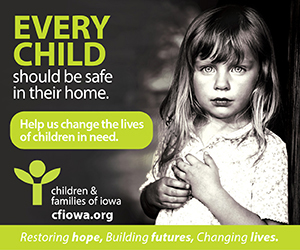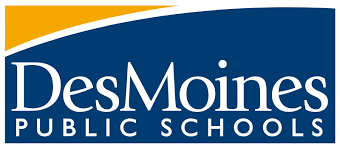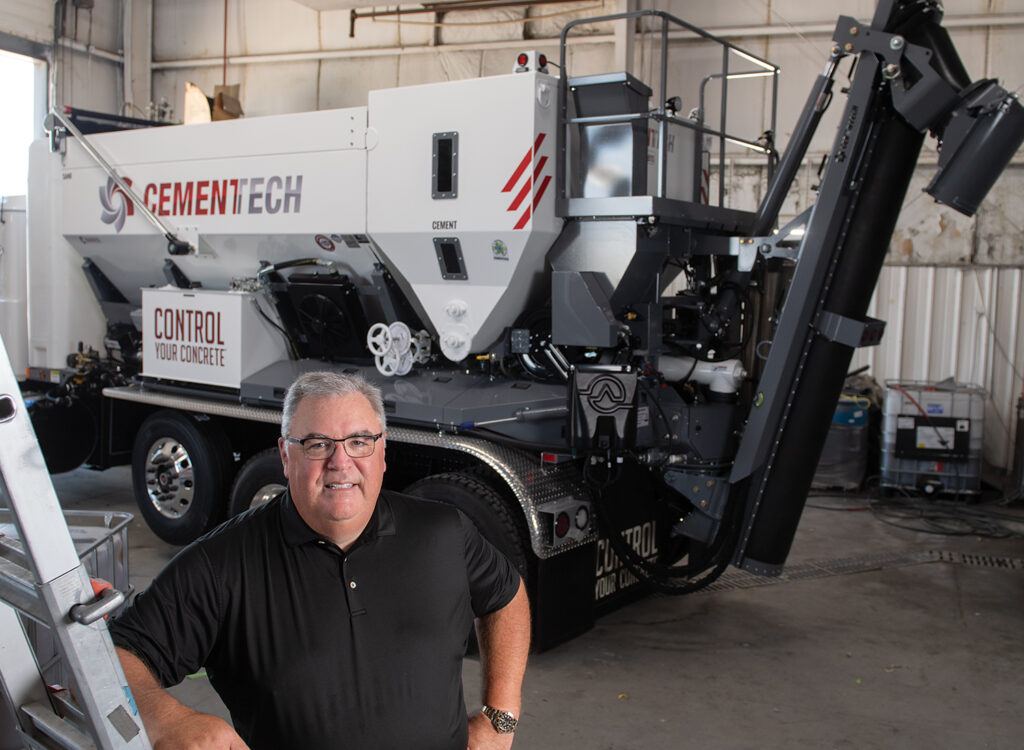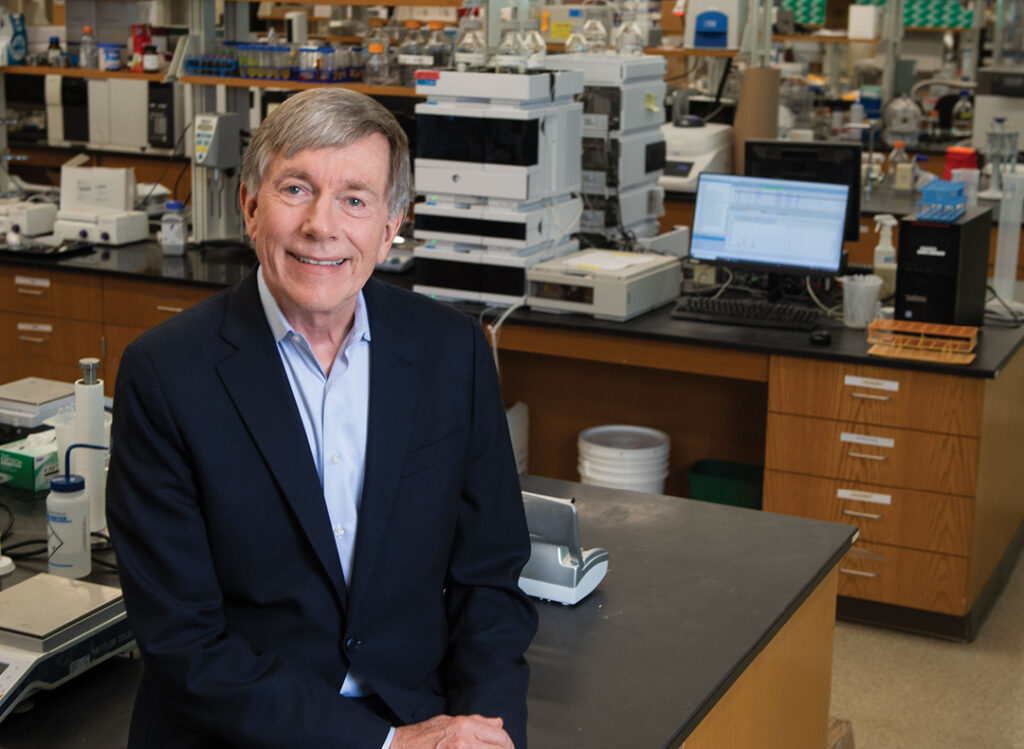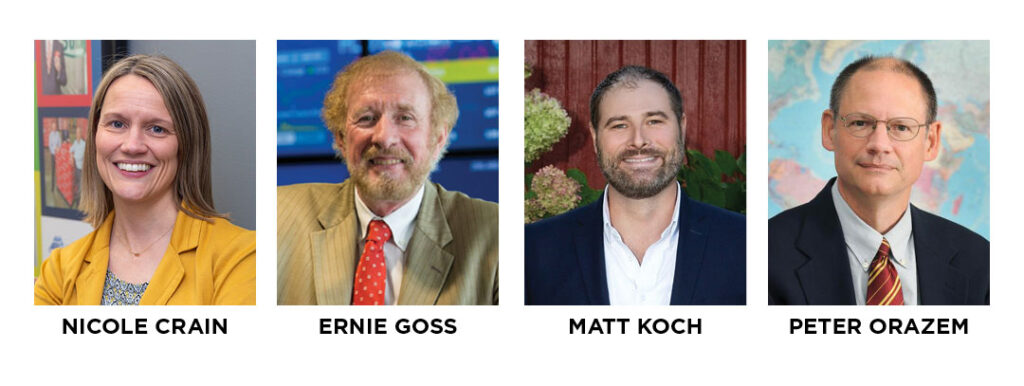Panel: 2020 was a ‘test case’ for organizational change
How will workplace cultures be affected by more than a year of remote work?

More than a year into the global pandemic, organizations of all sizes are still grappling with the paradigm shifts created by the necessity of remote work and social distancing. As we begin to see the light at the end of the tunnel with increasing vaccination rates and loosening restrictions, how will companies change their policies and practices as a result? How will corporate culture be shaped by the pandemic?
To examine some of the emerging human resource issues arising in the post-pandemic workplace, the Business Record reunited leaders from four HR-oriented firms to share their perspectives a year after we first brought them together last spring to help assess the new pandemic workplace realities.
Our virtual panel that was held live on March 31, moderated by me and our publisher and executive editor, Chris Conetzkey, included:
Maura McCarthy, vice president of communication solutions at ITA Group
Ali Payne, president of ethOs and practice leader of organizational engagement at Holmes Murphy & Associates
Jo Ellen Whitney, an attorney with the Dentons Davis Brown Law Firm
Amanda Young, senior vice president and chief human resources officer at Bankers Trust
The lively discussion brought out a number of universal themes from the shared experiences of remote work, seasoned with some keen insights from leaders viewing them from varying HR perspectives.
Among them:
- The most important changes in communication strategies.
- Effects that the pandemic has had on leadership development.
- Rethinking some enduring cultural myths about different generations’ work habits.
- Legal, ethical and equity considerations of hybrid work schedules.
- New realities for addressing work-life balance issues.
Clearly, 2020 was an inflection point for organizational strategy, and the pandemic is truly only beginning to spark what’s going to be a new, fresh look at what the 21st-century workplace should be.
Here are highlights from the panel discussion:
Among the themes that emerged from last year’s discussion were the importance of communication, compassion and continued human interactions as organizations respond on the fly. So along those lines, what’s been the biggest shift for your organization due to the pandemic? What do you see now as the most important thing you’re pulling away from it?
Young: Despite the fact that we thrive on in-person interactions, our team has adapted well, and we found other ways to connect with co-workers and serve our customers. So we’ve been more intentional about team member communications and employee engagement. For instance, we have a women’s affinity group called Empower that’s hosting a lunch and learn tomorrow to discuss ways to stay connected and supportive during this time. Before that, we did do biennial employee engagement surveys, but we hadn’t thought to regularly survey team members on specific topics to gauge what’s going well, what needs to be improved upon, and how we can better support them. So the pandemic prompted for us many more frequent requests for employee feedback and quicker turnarounds on acting on that feedback, and I think that’s something we’re going to carry forward post-COVID.
Whitney: My perspective comes both from my law firm, which is a fairly decent-sized employer, as well as my clients, and I think one of the things that really has come clear throughout the pandemic is this idea of rules balanced with flexibility. For a lot of my [client] employers — and this is particularly true of lawyers — they don’t like the rules. Lawyers want to fight about every single rule there is. If you tell them they have to put a mask on, you’ve got to have a brief ready to go to explain to them why they need a mask. We had a lot of pushback on rules, but we had that same pushback out in telecommunication companies, in hospitals and other places. I took to carrying a pocket Constitution to show people what their actual constitutional rights were because these arguments got really kind of big. … So it was that balance of sort of understanding that there were rules you had to abide by, while at the same time asking everyone to be flexible and to help create a more flexible work environment.
Payne: A lot of things have changed, and I think actually a lot of for the good. One of the things that we have been not only focusing on inside our own walls but also with a number of clients and customers is really around purpose. I think [the pandemic] gave everybody that option to take a step back and [ask]: What have we been doing that’s been working really well, and what have we been doing that hasn’t been working so well? So we launched a purpose journey for employees, both internally at Holmes Murphy as well as a number of our customers around individual purpose as an employee. How do we take what we do every day and be mindful about the impact that we’re making that’s bigger than the work that we do? … It’s been really fun to get to know more employees and the vision they have for their own lives. The other thing that’s happened is just around the idea of connection. We know that engagement scores have gone up, but unfortunately well-being scores have gone down. So while people are more engaged in the work that we do every day, they’re not as well as they once were. We’re trying to come up with unique ways that are different than what we used to do to help people feel like they are financially well, or social and emotional well, or even physically well.
McCarthy: Our business is really [focused on] employee experience; we have a full-solution line on that. So we have definitely piloted a lot of different things over the past year, but flexibility is a keyword. More than that even is personalization — that is the main direction that we’re seeing through our customers and clients as well as our team members. We really put a lot of focus on the team member audience when we rolled out a campaign. The phrasing was “calm, caring and connected.” We really took a step back and said, “Let’s just not think business first; let’s think about the individual.” Honestly, I think we learned a lot more about each other, even if we’ve worked side by side for 10 years with somebody. We got a view into their home, what their life is like. I think there’s a lot of stuff that we learned that was really valuable.
When we talked a year ago, there was an overall feeling, and I think it’s being echoed here, that the workplace culture really helped your organizations to get through the scramble of the initial weeks, and that the culture helped create resilience. What are some of the big shifts in culture that you feel you’re seeing now as a result?
Whitney: I think there before COVID there were a couple of cultural myths in the workplace that got perpetuated, and COVID really blew those up in some ways. One of those myths was that millennials are lazy, they don’t have loyalty, and they’re not going to pull their own weight in the workplace. You see that in articles or social media, and we found that not to be true in my employers [as clients]. We found that it really depended on, like Maura talked about, engagement, or as Amanda talked about, people feeling that they had power and control, that they had a purpose there.
There’s also a myth that the only people who are going to be creative and come up with new and clever solutions are young people, and I didn’t find that to be true for my clients. I found that — and frankly I think there’s a fair number of social science studies that will say this is also true — that it wasn’t just young people who came up with creative solutions. It was older members of our workforce, people with more experience, people who could say, “Yeah, we tried it that way, but if we take this twist, it will become even more effective.” I think the third thing is that people found that diverse teams really work better. Teams that have that mixture of older and younger employees or less experienced and more experienced people, teams that bring different viewpoints, and so we weren’t always relying on just the one person to drive the team.
Young: I would say we’re just seeing leaders come out of the woodwork in different ways. We have a focus crisis management team that’s really led the decisioning process and built the kind of model on the changes we’ve had to temporarily do in our workplace, and so agility is key here. Creativity is key, like Ali and Jo Ellen have talked about. We’ve had some really fun things going on that we don’t want to lose track of. We’ve had yearbook awards, photo contests, virtual happy hours, trivia competitions across our teams that are bringing a lot of energy. One thing I have loved is the connection with our CEO, [Don Coffin]. We do a Coffee with Coffin, and employees hop on [a videoconference] and they get updates from him on how things are going with the return to workplace and then also they get to ask him questions. I just see those kinds of connections and being intentional about the way we have been communicating as something we don’t want to lose, and that it will become an expectation from our team member population.
As you see this intentional energy in the virtual environment, how can organizations translate that to working more in person or in a hybrid format?
Whitney: I think once the genie’s out of the bottle, it’s really hard to put it back in. When you train leaders, when you empower them, when you give them the ability to make change, when you tell them you want to listen to their creative ideas — you could stifle that …, but I can’t imagine anybody would want to. One of the things [the pandemic] did is it took people who thought there was only one way to work and showed them there were a lot of successful ways to work.
Young: I’m hoping that we find the best of both worlds out of this because I do think there’s value in some of the in-person situations, but the flexibility for people to be focused on the performance of what they add is just going to be that much more important. So I think it actually enables us to be more performance- and outcome-focused versus “that’s their job title.” I think we’ve seen a lot that it has eliminated some of the silo thinking as well, because people partner up more and their collaboration is maybe a little stronger than if they would have just stayed in their own area if they were in the building. But yeah, I would agree. I’m hoping for the new normal. It’s exciting, and it has some of the flexibility if it’s easier to work from wherever you want to be, as well as the times where it’s helpful to have everybody in a room together.
What are some of the issues that businesses should consider as they’re moving back into whatever the new normal might look like for their business?
Whitney: The first question about how we’re going to bring people back is always going to be about employee safety. How do we ensure employees remain safe? How do we ensure customers, vendors, subcontractors, whoever we’re going to come into contact with, are safe? And that’s going to vary from industry to industry. I’ve worked with a lot of industries where you have to be present to do your job, like hospitals, but I also have a fair number like software and finance where you can have more remote work. So the first question becomes safety. The second question attached to that are those people that just don’t feel safe. No matter what we do, no matter how we manage it, how long will that sort of accommodation for their fears or concerns last? One of the things I’ve talked with a lot of my employers is about having a staggered return, and I’m sure that’s true of a lot of employers. … We want to think about how we accommodate, but still get where we need to be from when we’re reopening.
From my perspective also, there are wage and hour issues attached to a hybrid work model. The Department of Labor issued a memo about remote work and accounting for hours. If you were a law professor, and you said, “Write me a memo about every piece of law there is about remote work,” you would get an A+ for what the Department of Labor put out. If you said, “I need to give a client practical advice,” you would get an F because it’s just a recitation of the law, but it doesn’t tell you the practical things. So that’s something that companies really have to work through. And it isn’t just on a company or industry basis; it can also be a job-related thing, [because] some people get interrupted more often.
And then the final thing I would say about that in terms of legal issues is a lot of people got a pass on privacy and security concerns at the beginning of COVID because we had to send everybody home — it was an emergency. And the Office of Civil Rights, the Fed, FCC, they kind of didn’t enforce a lot of the privacy and security rules for data. We’re not going to get that free pass anymore, which means we have to really think about what that looks like, particularly in this hybrid remote work sort of system where you’re personally in the workplace and then you’re partially someplace else.
McCarthy: So right now all executives and all managers are welcome back in the office, and then 10% of our team members are able to come in. What we’ve done is requested that they not sit within the pods per se; they can only have one per pod so that we have 6 feet in between people. And it really hasn’t been too much of an issue. We’ve been relatively successful at keeping cases very low. Across the team we would like to move to 25% — we are talking about that in the future. That staggered return I think is something that we’ll likely consider. We haven’t made any commitment on what that date would be, just simply because we’re waiting to see how the vaccination process rolls out and the success rate. But we are seeing in our business that people are going back to traveling. So I do think that we’re seeing some movements and light at the end of the tunnel, so we’re excited about that.
Payne: We’re in the same boat; we’re still trying to figure out exactly when we bring everyone back. We do red days and blue days and a certain percentage of the population can come back on those days, so we were trying to stay within Jo Ellen’s confines of being very legally sound. We’ve got great attorneys to help us do that. We’re also in the middle of trying to figure out [space considerations in the office] because we have offices that are smaller in nature and some offices that are larger in nature. … I think that most people understand wearing a mask helps; most people understand being 6 feet apart is a helpful solution. We’re in the mindset now where we’re saying, I think people get it. I think people understand why we want the physical distance, to understand why we want only a certain percentage of employees back in the office – but we do believe that the future will look different. … We’re trying to figure out creative ways to get people to want to come back, because we think that there are people that probably really like this work from home stuff and they might want to stay working from home. But we believe there’s an element of collaboration that can happen in the office that just won’t happen over a Zoom call, and we know the statistics are out there that burnout is high, and we want to figure out how we start to talk about that.
Young: One of the things I think that we all have in common is that we didn’t have a blueprint for this. And so we all have kind of been inventing as we’ve been going along in how to respond to the pandemic. … One of the mottos that I’ve had from the beginning that I hope not only will continue in the pandemic return-to-work [decisions] but also that future workforce decisions we make — and we’re making them fast and furious — should age well over time.
When we talk about [Bankers Trust’s] return to work, we want to make a full return to [in-person] work post-pandemic, and then make changes for what the future workforce looks like because it allows us to control the variables that we have been experiencing as a business in this environment. This allows us to really control for how remote work in the hybrid approach will impact us in the future, and I do think we’ll get there. I think that just like every other workplace, there’s some stuff that we have done before the pandemic — we had remote-work policies, we had flexible work arrangements, we had job descriptions indicating the degree of what roles could be eligible for remote or hybrid work. But we’ve all now had a year test case where we have had to change some of those ideologies on what works and doesn’t work. … How can we be intentional about the ways that we really need to collaborate in person versus how can we connect and be more efficient digitally?
A study by the Harvard Business School of more than 3 million workers in 16 global cities found the average workday increased by more than 8% in the pandemic’s early weeks. So maybe there’s a big trade-off where we’re more efficient but we’re all working too hard now? How are your companies considering that issue? [Editor’s note: During the panel discussion, the moderator cited an incorrect study source.]
Whitney: I work a lot with CEOs, CFOs and the people who run HR, so I’m going to say their workday didn’t increase 8% — it increased 80%. Literally, there wasn’t a human resources director that at some point in time didn’t practically have a breakdown on the phone because the law changed every 15 minutes. … It was running a marathon like it was a sprint race — it was just really overwhelming. And those people are starting to talk more about burnout, they’re really starting to tire out. But I think the things we saw there also translated into other workers, because when you’re at home, you have more trouble drawing that line. I like to work in the office, and part of the reason I like to work in the office is when I’m at my kid’s hockey game, I want to be at my kid’s hockey game. I’m better at drawing those lines when I have physical lines. But when you work at home, sometimes you don’t have that.
Payne: To go along with what Jo Ellen said, you have to model [that balance] and you have to encourage it across your leadership team. … Our CEO actually put out a reflection of 2020 in a video at our last all-employee meeting, and he talks about “Blursday,” right? We don’t know what day of the week it is — they all run together. So we’re putting out mental health resources; we can’t get them out fast enough. Those resources are more necessary than ever because of the pressure and commitments, the double and almost triple roles that many of our workers are playing, especially those that have concerns where the pandemic has hit their families at home.
McCarthy: We’ve talked a lot about that, actually, looking at the actual work function that the person does and how being at the office or being virtual will impact your work product or the service that you’re doing. [We’re] having that be more of the discussion versus the team member saying, “This is what’s good for me,” and instead allowing the leader to look at what’s good for the business and the actual function that you perform, because that way you’re looking at it with all the adjacencies. … So we’ve talked a lot about really diving into which areas of the company will have more flexibility just by the nature of the work they do, and how often they have to depend on somebody else. I think that’s a fair route to go. I’d be curious to hear from the panelists on how they think their teams are going to react to that. We’ve had some feedback across our task force, like, “How will that be seen by employees; will they be frustrated?” I think that’s just the nature of the career path that you chose, but I’m not sure that everybody has that mindset.
Young: I think it is a mindset shift. It’s a mindset shift from measuring bodies in seats to measuring results, and we’ve been working for a long time on performance management, in coaching, in getting better and getting real, just-in-time conversations through that process for managers for the high-performance teams they want to have and lead. So I think arguably we’re in better positions than we were even 10 years ago to work towards this, but it’s coming at us again at a very, very fast pace. We have job descriptions with the degree of remote eligibility within all of our roles. We’re going to revisit those with our HR business partners and our business leaders to really understand, now that we’ve had this test case for a year, how have those predictions changed. To answer your question, we’re really going to focus on the roles’ eligibility to be remote or hybrid and the skill set that somebody can self-evaluate on whether they’ll work well in that world, and then we’ll manage to perform. So we’re trying to lead into those decisions based on performance. … And we’re a customer-centric business, so a lot of it is a wait-and-see game of how our customers want to continue to come back to connect with us.
Whitney: One of the things I found for some clients is when they were upset because people were gone, they couldn’t see people every day and when you said to them, “What is success in this position?” they couldn’t tell you. I think that’s part of how we get to equity — you have to tell me what it looks like to succeed, so I know what to measure. … I think that’s going to be critical for looking at equity, for looking how we fill the roles.

